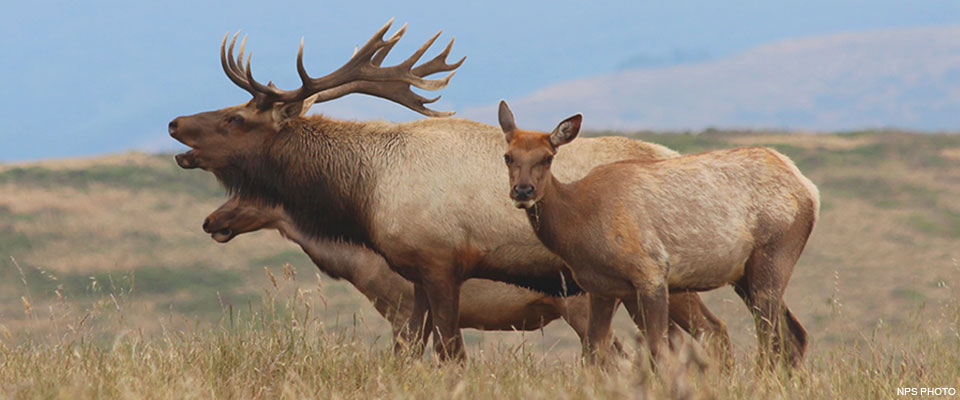News Release

|
Subscribe
|
Contact: 415-464-5131
POINT REYES STATION, Calif. – Today, the National Park Service (NPS) announced that the population of three tule elk herds at Point Reyes National Seashore stabilized or declined in 2020. The park manages a fenced herd at Tomales Point and two free-ranging herds in the Limantour and Drakes Beach areas.
Investigations of dead elk, observations of living elk, and range assessments conducted by park staff in coordination and consultation with wildlife managers and veterinarians from the California Department of Fish and Wildlife (CDFW) suggest poor forage quality is the underlying cause of these population changes.
The herd at Tomales Point declined from 445 to 293 elk, similar to past declines in this area. The other two herds stabilized or declined over the same time period.
The range carrying capacity for tule elk at Tomales Point is estimated at 350 individuals. Over the past 25 years, the Tomales Point elk population has fluctuated between 280 and 550 individuals. The herd’s population tends to increase incrementally during favorable conditions, with the population expanding beyond carrying capacity, followed by less favorable conditions and subsequent population declines.
In 2020, the population of the free-ranging Limantour herd declined from 164 to 155 individuals and the Drakes Beach herd stabilized and increased by one from 138 to 139 individuals. In the prior three years, the Drakes Beach herd otherwise increased by an average of 14% per year. These census results, along with necropsies, observations of living elk, and assessment of range conditions suggest poor forage quality caused by drought conditions exist parkwide.
NPS management of elk at Tomales Point is guided by the 1998 Tule Elk Management Plan which predicts a series of modulated swings of population growth and decline in this herd, a process called natural or self-regulation. The decline in the number of elk at Tomales Point this year and in the past, along with subsequent increases, are within normal and predicted population fluctuations.
Although the NPS and CDFW believe the elk population declines are drought-related, there is no evidence that the population decline is due to dehydration and a lack of water. Park staff mapped water sources and monitored water conditions at Tomales Point on a regular basis from July to November, confirming adequate water supplies are available for the elk in the many creeks, seeps, and springs distributed throughout the reserve. Conversely, the nutritional quality of forage is exacerbated by ongoing drought conditions.
The tule elk at Tomales Point are not being considered as part of the ongoing General Management Plan Amendment, which addresses the active ranching areas in the park and the free-ranging tule elk in those regions. The National Park Service is committed to maintaining three healthy herds of tule elk at Point Reyes National Seashore.
For more information, please see our Tule Elk at Tomales Point Frequently Asked Questions and Point Reyes National Seashore's website at nps.gov/pore.
-NPS-
Last updated: August 24, 2024
